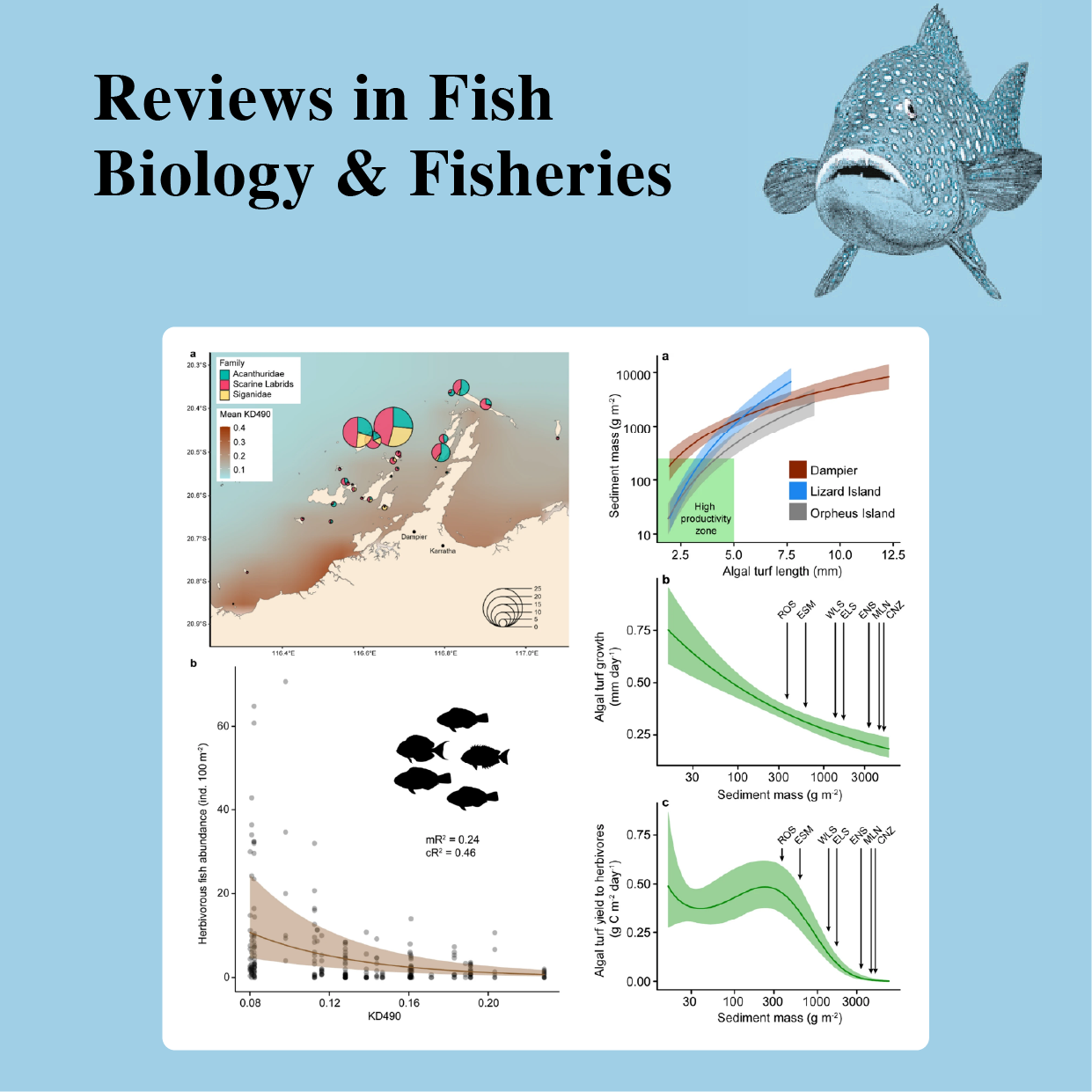The limited role of herbivorous fishes and turf-based trophic pathways in the functioning of turbid coral reefs
Sterling Tebbett, David R Bellwood, Tahlia Bassett, Michael Cuttler, Molly Moustaka, Shaun Wilson, Helen Yan & Richard Evans
Abstract:
Herbivorous fishes, and the productivity of algal turfs, are widely viewed as central to the functioning of coral reefs. This understanding is largely based on clear-water reefs. Our knowledge of herbivorous fishes and the nature of their nutritional resources on turbid reefs, by contrast, remains relatively limited. We therefore explored the nature of herbivorous fishes and the epilithic algal matrix (EAM) on turbid coral reefs across the Dampier Archipelago in northern Western Australia. We conducted comprehensive surveys of herbivorous fish abundances across natural turbidity gradients. Moreover, we quantified the trophodynamic functioning of herbivorous fishes relative to EAM structure and productivity. We revealed a clear relationship between turbidity gradients and herbivorous fish abundance, with herbivorous fishes being virtually absent from high turbidity reefs. Across the Dampier Archipelago, EAMs were typified by sediment-laden turfs with a limited propensity to deliver nutritional resources to fishes, while the productivity (i.e. the capacity for individuals to grow and produce new biomass) of herbivorous fishes was low and a fraction of that documented on clear-water reefs in the Indo-Pacific. Given the tight coupling between herbivorous fishes and their nutritional resources, these findings imply bottom-up nutrient resource limitation, which is likely due to reduced light levels and sediment-laden conditions inhibiting EAM productivity on turbid reefs. Our results suggest that EAM-based trophic pathways may be particularly unproductive on turbid reefs, with this energetic pathway playing a limited role in reef functioning compared to reefs in clear water.

